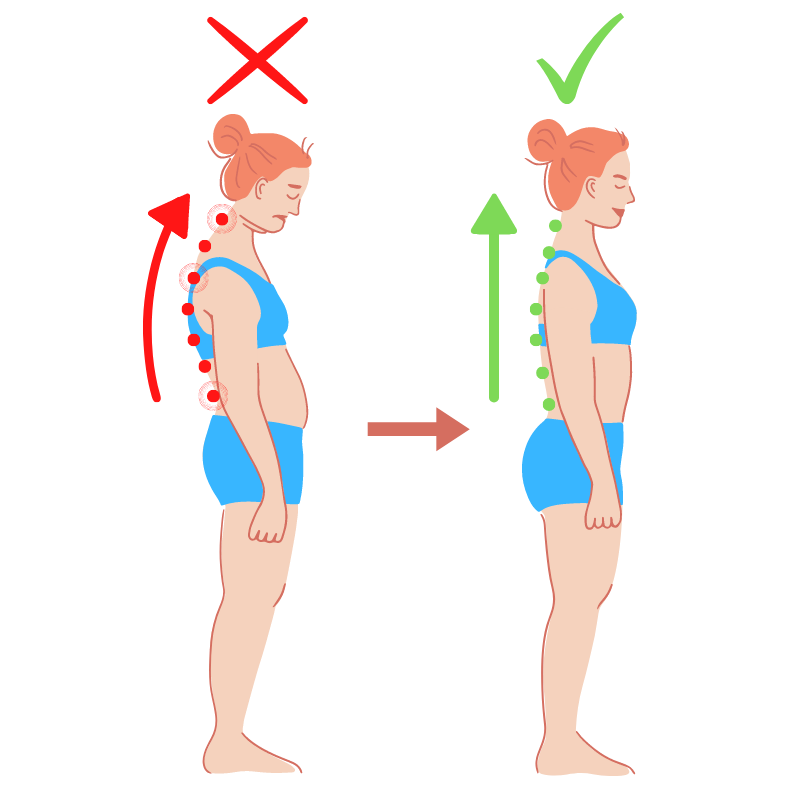Have you been told that you “carry your stress in your neck and shoulders”? While stress doesn’t help us, it is more likely that “your stress” is due to your posture. Having good posture can reduce strain on the body, while bad posture will increase the stress on the body.
Good Posture
Good posture aligns your ears, shoulders and hips while sitting, and in standing, the ankles. When you slump and lean forward to read a computer screen, a number of muscles become lengthened and weakened over time. This then leads to overload or increased stress on other muscles, such as Upper Trapizeus, Sternocleidomastoid, Suboccipitals and Pectoralis Minor.

Benefits of good posture:
- alleviates chronic neck and back pain,
- keeps bones and joints correct alignment,
- decrease arthritis risk,
- prevents spine abnormality,
- minimises strain problems,
- reduces fatigue,
- increases oxygen intake,
- gives you more energy,
- reduces migraine and headaches,
- prevents muscles spasms,
- decreases stress.
How do you fix it?
Become aware of your posture – begin to adjust it back to a more normal posture. Some good cues for changing your posture is to :
- Lift your chest
- Open across the chest
- Draw the back of your head up
You will not be able to hold this all day, so aim for 5-10 second holds to begin with and repeat often throughout the day.
Release the tight – You need to stretch the tightened and overloaded muscles. If you lean over a desk all day, you need to go back the other way. You can use rollers and trigger balls to release the tight muscles or active range of motion exercises such as the Archer demonstrated by Tom here.
Strengthen the weak – Then you need to strengthen the weakened muscles. Through tailored exercises for each weakened area. The type of exercise that is right for you will depend on your current level of pain and strength. A good all over strengthening exercise is a prone snow angel demonstrated here by Tom.
Time-frames:
This depends on a number of factors, how often you do your exercises and stretches, how often you do or don’t correct your posture and how often you overload your system. Generally speaking you will start to notice changes in 2 weeks. After 6-8 weeks your body will be stronger with the new posture and be able to maintain it for most of the day giving you the benefits of less “stress”.
Book an appointment
Need to see a Physiotherapist? Book an appointment now with one of our team by calling
For more information, please see our FAQs or contact the clinic.








